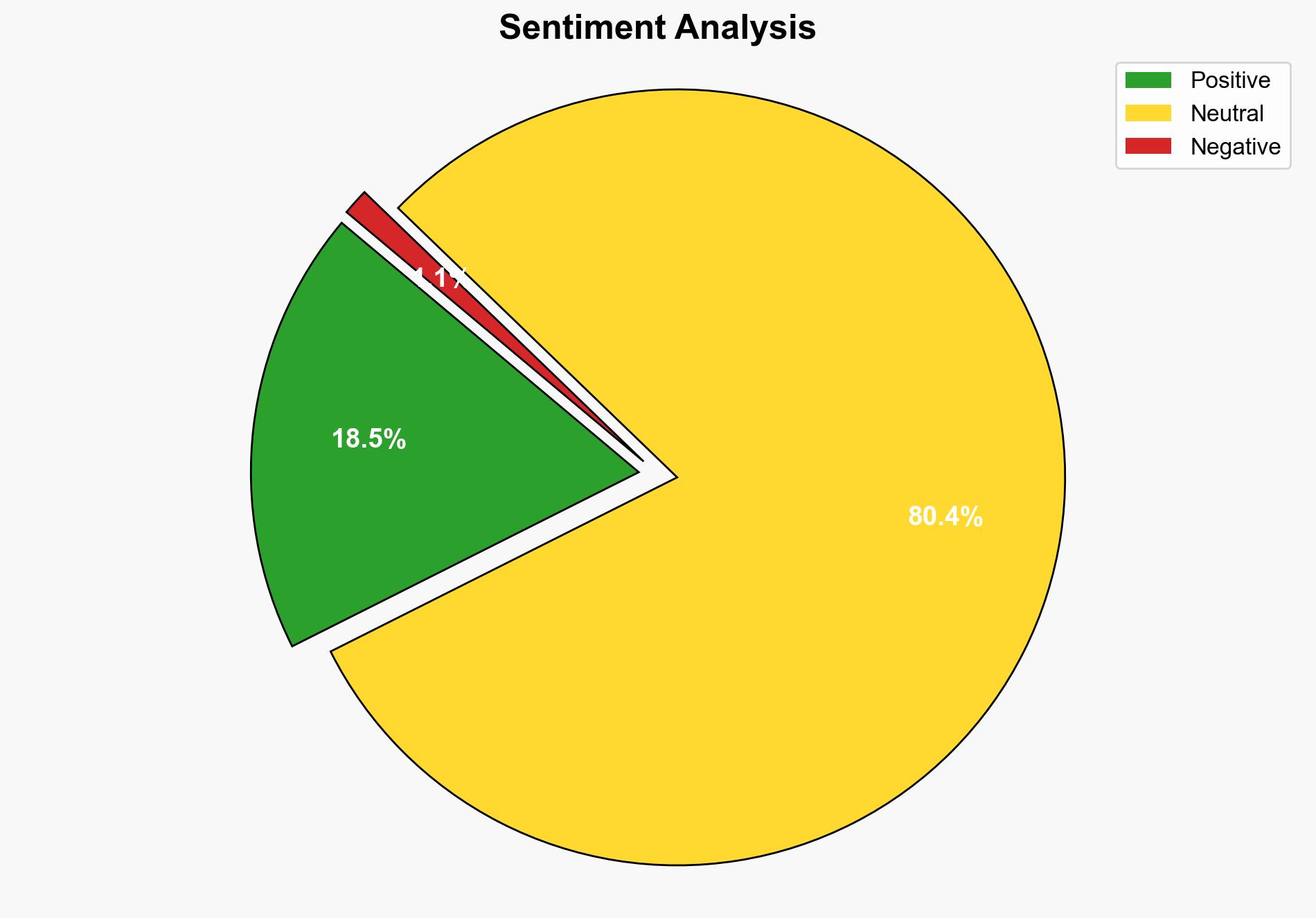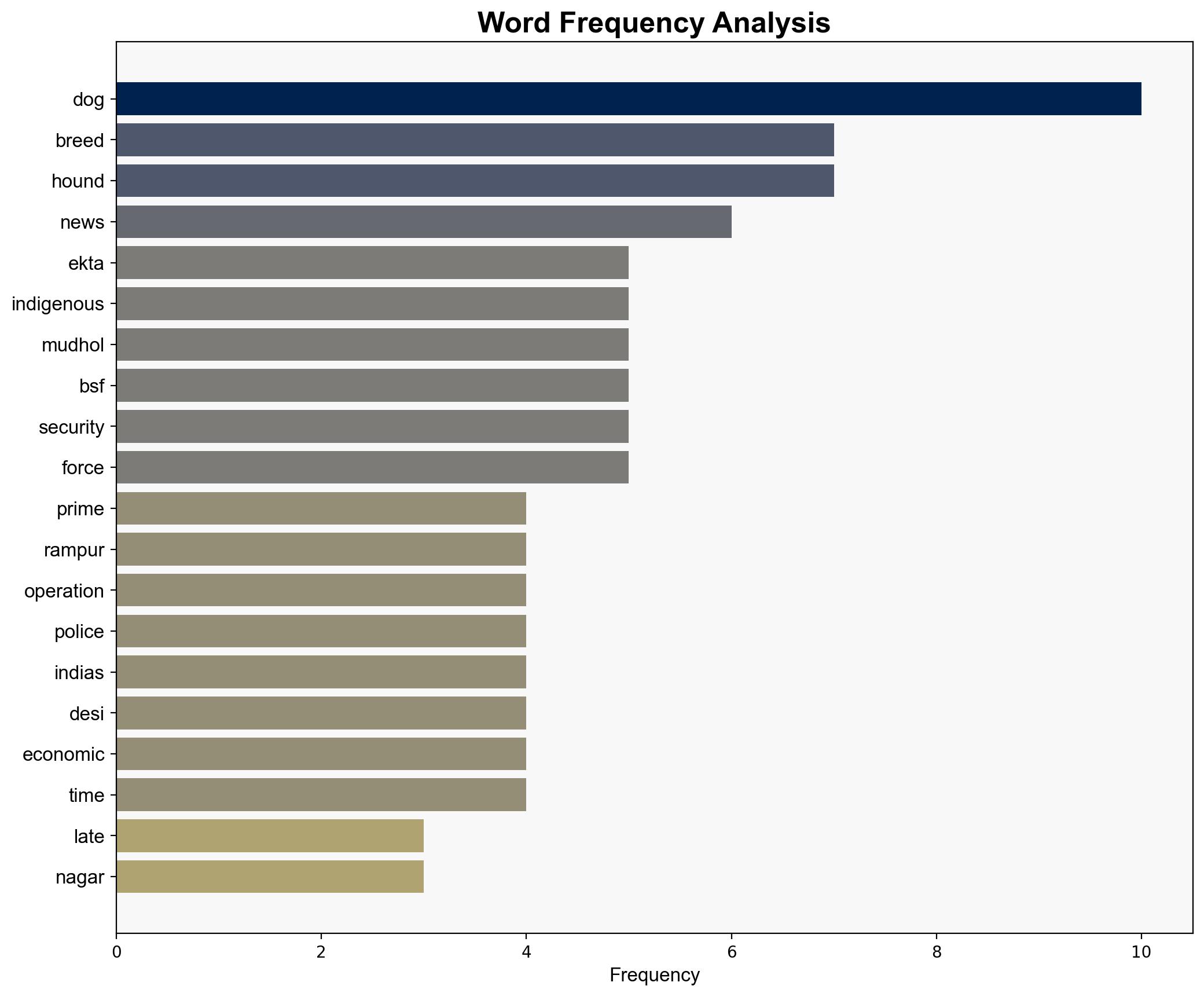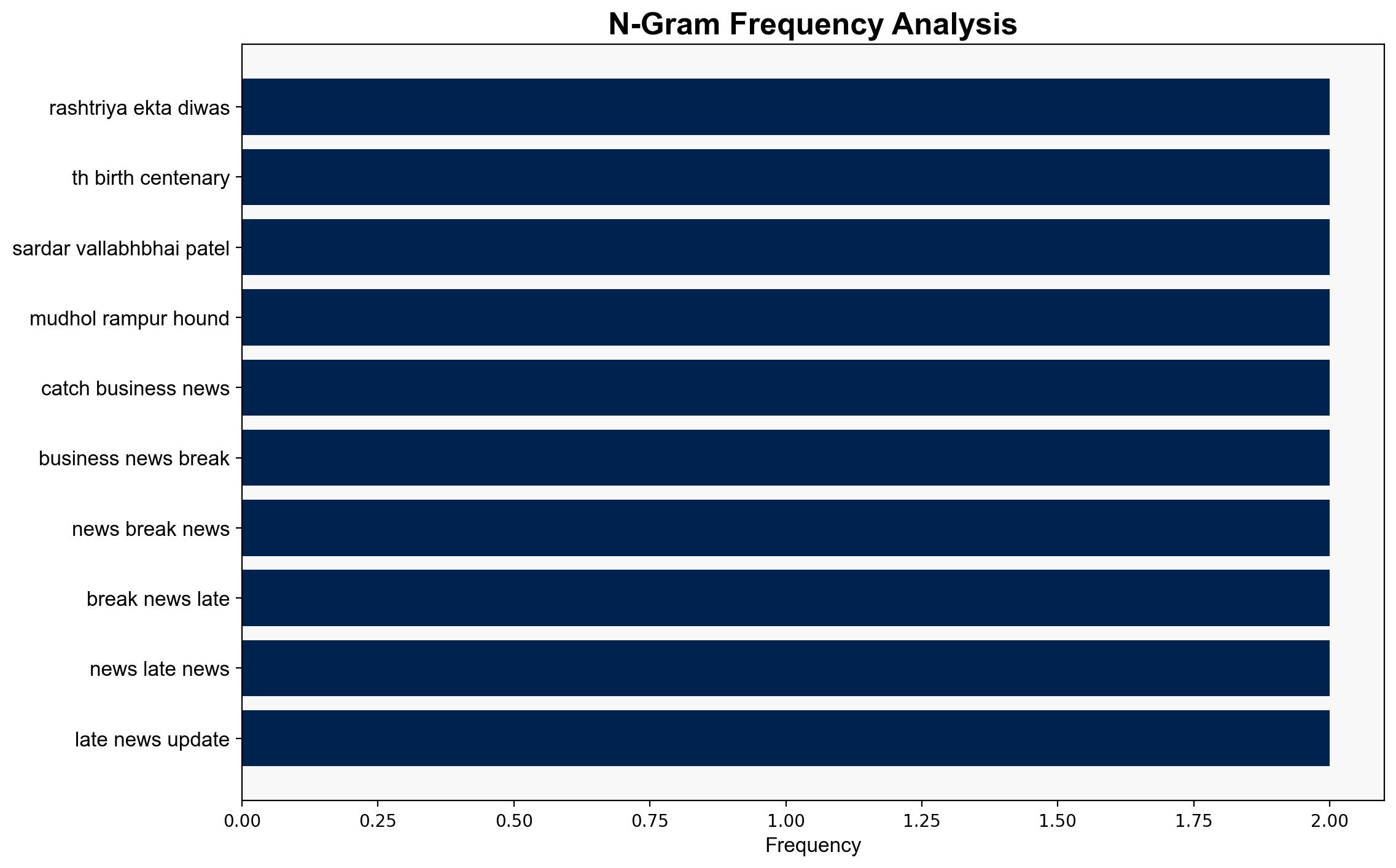Desi dogs take charge After proving their mettle in anti-Naxal and border ops Mudhol Rampur hounds to wow PM on Ekta Diwas – The Times of India
Published on: 2025-10-26
Intelligence Report: Desi dogs take charge After proving their mettle in anti-Naxal and border ops Mudhol Rampur hounds to wow PM on Ekta Diwas – The Times of India
1. BLUF (Bottom Line Up Front)
The integration of indigenous dog breeds like the Mudhol and Rampur hounds into India’s security operations represents a strategic shift towards self-reliance and operational efficiency. The most supported hypothesis is that this initiative will enhance India’s security capabilities, given the breeds’ adaptability and resilience. Confidence in this assessment is moderate, with a recommendation to continue monitoring the program’s effectiveness and scalability.
2. Competing Hypotheses
1. **Hypothesis A**: The deployment of indigenous dog breeds will significantly enhance India’s security operations due to their adaptability to local climates and terrains, leading to improved operational outcomes.
2. **Hypothesis B**: The focus on indigenous dog breeds is primarily symbolic, aimed at promoting national pride and self-reliance, with limited actual impact on security operations compared to established foreign breeds.
Using the Analysis of Competing Hypotheses (ACH) 2.0, Hypothesis A is better supported by the evidence of successful deployment in diverse environments and the structured breeding and training programs. Hypothesis B lacks substantial evidence of symbolic intent overshadowing practical benefits.
3. Key Assumptions and Red Flags
– **Assumptions**: It is assumed that the adaptability and resilience of indigenous breeds will translate into superior performance in security operations. Another assumption is that the training and breeding programs are sufficiently robust to maintain these advantages.
– **Red Flags**: Potential overestimation of the breeds’ capabilities without long-term performance data. Lack of comparative analysis with foreign breeds in similar roles.
– **Blind Spots**: Possible logistical and resource challenges in scaling the breeding and training programs nationwide.
4. Implications and Strategic Risks
The successful integration of indigenous breeds could set a precedent for leveraging local resources in other security domains, enhancing self-reliance. However, failure to meet operational expectations could lead to resource misallocation and undermine trust in indigenous capabilities. The initiative’s success could also influence regional security dynamics, particularly in border areas.
5. Recommendations and Outlook
- Conduct a comprehensive evaluation of the program’s impact on security operations, comparing indigenous and foreign breeds.
- Develop contingency plans to address potential shortfalls in the program’s scalability and effectiveness.
- Scenario Projections:
- **Best Case**: Indigenous breeds outperform expectations, leading to broader adoption and enhanced security capabilities.
- **Worst Case**: Operational challenges undermine the program, necessitating a return to reliance on foreign breeds.
- **Most Likely**: Gradual integration with mixed results, requiring ongoing adjustments and evaluations.
6. Key Individuals and Entities
– Prime Minister Modi: Guest of honor at the Ekta Diwas event.
– Sandeep Gupta: BSF Commandant, Veterinary Medicine, involved in the breeding program.
– Daljit Singh Chawdhary: BSF Director General, overseeing the training and deployment of indigenous breeds.
7. Thematic Tags
national security threats, counter-terrorism, regional focus, self-reliance, indigenous capabilities




